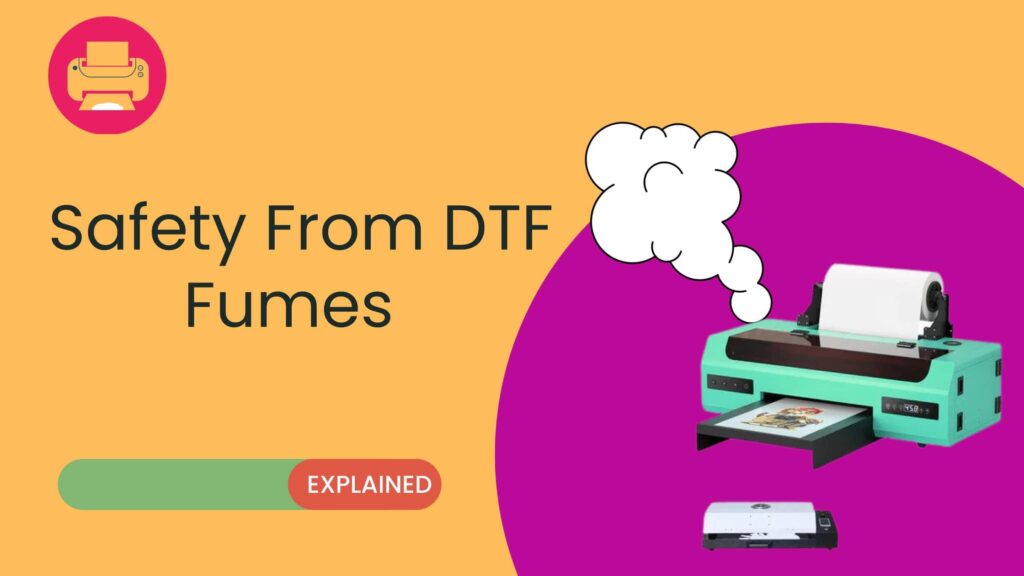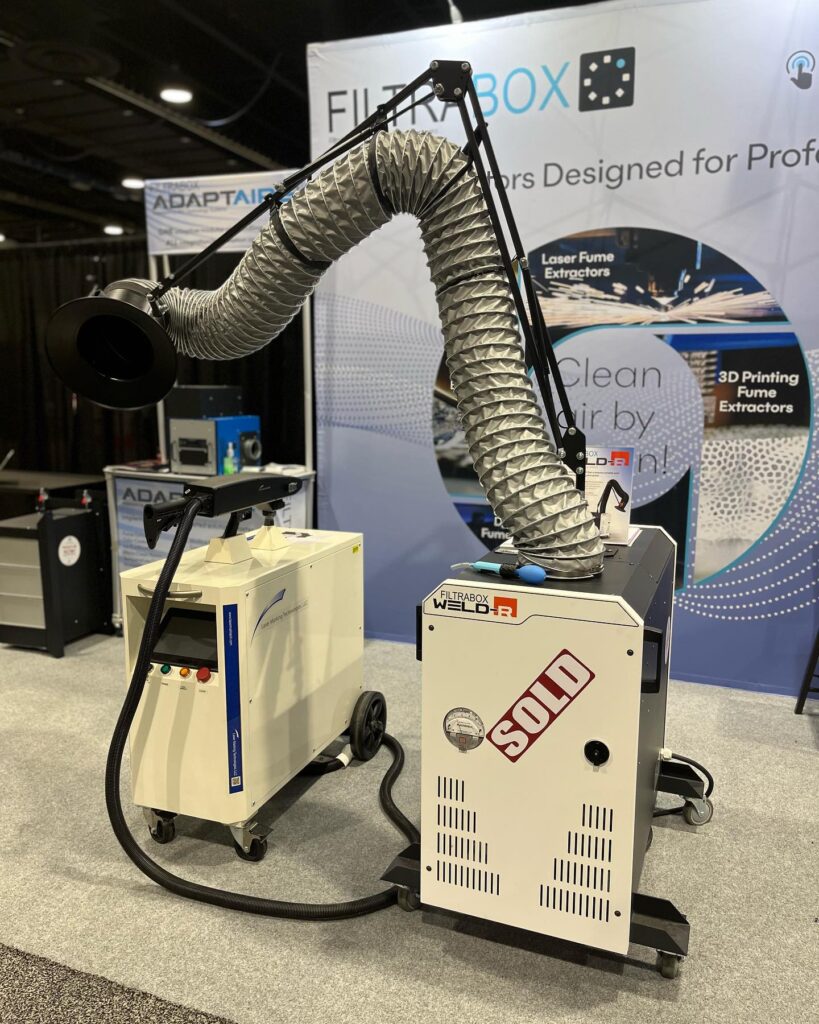DTF is a household name in the world of modern printing. Yet, beneath the vibrant designs and intricate details, there’s something lingering in the air – DTF fumes. These often-overlooked byproducts of the printing process contain secrets that every DTF enthusiast ought to expose. In this blog article, we’ll explore what’s hidden in the mist and why it matters to you as we shed light on the composition of DTF fumes.

DTF Fumes: What Are They?
The delicate, sometimes invisible companions of the DTF (Direct to Film) printing process are DTF fumes. They are the airborne substances and particles that are released during the creation of stunning prints. The chemicals and compounds that make up these vapors come from the ink and film ingredients that were employed in the printing process.
Imagine small particles and volatile materials being released into the air as your DTF printer does its magic to turn your digital creations into physical pieces of art. These substances make up DTF fumes.
Why is this important? For your protection and the wellbeing of people who work close to DTF printing, it is essential that you understand the chemical makeup of these gases. To make wise judgments regarding your printing methods, it’s like understanding what’s in the air you breathe. We’ll go into more detail about DTF fumes & gases in the sections that follow, including their chemical composition and any possible health risks. So, let’s unravel the mysteries swirling around these overlooked printing companions.
Chemical Composition of DTF Fumes
Within the ostensibly harmless atmosphere of DTF fumes resides a potentially hazardous chemical cocktail. The mixture of these vapors includes ammonia, formaldehyde, and unbound isocyanate molecules.
Let’s break it down a bit:
- Ammonia: When found in DTF emissions, this common household chemical may irritate the eyes, nose, and throat when inhaled. Since ammonia can damage your respiratory system and general health, it’s essential to exercise caution.
- Formaldehyde: Formaldehyde is a chemical that is used to preserve biological specimens, but its presence in DTF smoke raises safety issues. It could irritation the skin and eyes, as well as the respiratory system, causing pain.
- Isocyanate Compounds: These compounds, particularly those released from scorched polyurethane resins in DTF printing materials, are cause for concern. If breathed, isocyanates may damage the lungs and perhaps cause respiratory problems.
- Additionally, various volatile organic compounds (VOCs) that are included in the ink and transfer films used in DTF printing might increase the toxicity of the vapors. The eyes, skin, and lungs are just a few of the bodily organs that these OCs might affect.
In essence, the chemical makeup of DTF fumes emphasizes how crucial correct handling and safety measures are. Failure to do so might expose people to these dangerous compounds, perhaps resulting in health issues. We will discuss prevention methods and the health dangers posed by DTF vapors in the sections that follow.
Health Concerns and Risks
I’ve had a lot of personal encounters with the possible health risks linked to DTF printing as someone who sometimes uses it for business. I’ve learnt to pay careful attention to how my body responds when I’m near DTF fumes since it’s not always easy sailing.

It has become apparent to me that these health concerns may manifest subtly. After a DTF printing session, I’ve had a persistent, somewhat bothersome cough and painful, watery eyes. It seems to be my body’s way of signaling, “Hey, something’s not quite right here.”
However, one particular incident really drove home the risks. We experienced a problem with the extractor on a Friday, and I was briefly exposed to fumes that ought to have been properly expelled. I became pretty unwell later that evening and during the following two days. The symptoms were undeniable:
- A severe runny nose that seemed to have no end in sight.
- A persistent headache that wouldn’t go away.
- Focusing was challenging since tears were constantly fighting for control of my eyes.
- A chesty cough gave me the impression that a storm was building within my lungs.
- A general sense of exhaustion, as if my body were trying extra hard to manage.
- My body appeared to be changing temperature, making me uneasy.
- I wondered whether it was just a coincidence after this event. So I started researching online to find out what may be there in those illusive DTF odors.
I found that there wasn’t a lot of specific information accessible, which was alarming. The inks employed seemed to be quite identical, and TPU (Thermoplastic Polyurethane) powder offered little hints either.
Volatile organic compounds (VOCs) evaporate at ambient temperature, which is an important feature that is sometimes overlooked. This implies that even if the printing environment doesn’t seem very warm, you could still unknowingly be exposed to these potentially dangerous substances. It is crucial to take measures and be aware of the hazards since the amounts of VOCs might vary depending on the kind of printer and ink you are using.
Mitigating DTF Fume Exposure
Folks, let’s talk about something crucial – the fumes that come from curing DTF adhesive. It’s important that you avoid breathing in these vapors because I can assure you that adhesive vapor is not a favorite of your lungs.
First things first: in this circumstance, ventilation is your greatest friend. When dealing with curing adhesive and DTF, you must ensure that the area is well ventilated. Throw those windows open and let some fresh air in. If it still isn’t sufficient, think about utilizing a fume extractor. The purpose of these devices is to remove the dangerous gases from your workstation, keeping you safe.
- Multiple filtration system (3 layers)
- 360-degree universal adjustable smoking duct
- Energy-saving and Environmental Protection
- HEPA Filter
FumeClear Fume Extractor- 100W
- 99.97% Purification Rate
- Professional Grade High Iodine Filter
- Great Suction Power
- Multiple Filtration System (3 Layers)
- Universal smoking pipe
- 99.97% Filtering and Purification Effect
- Simple Operation and Installation
- Triple Filters Equipped
The truth is that sometimes you may wish to add an additional layer of protection even with sufficient ventilation and an extractor. Respirators are useful in this situation. A respirator, or even just a high-quality filter mask, can make all the difference. But keep in mind that in situations with really low ventilation, even the mask may not be sufficient.
The important conclusion is that you should always exercise care while working with DTF adhesive and those fumes. Use a fume extractor, ventilate the area, and, if required, think about donning a respirator or a high-quality filter mask. Your health is worth it, and these steps can go a long way in keeping you safe from those toxic fumes.
Conclusion
In conclusion, understanding the content of DTF fumes is vital for your well-being and the success of your DTF printing endeavors. Protect yourself, prioritize ventilation, and stay informed about the potential risks. With these precautions, you can continue to create dazzling prints while safeguarding your health.
FAQs
The gases discharged into the air during the printing of DTF are known as fumes. They can contain harmful chemicals that pose health risks when inhaled. Your safety depends on you being aware of these gases.
Among other volatile organic compounds (VOCs), DTF vapors can also contain ammonia, formaldehyde, and free isocyanate molecules. These chemicals have the potential to irritate the skin, eyes, and respiratory system.
Ventilation is important. To reduce exposure, make sure your workstation is well-ventilated, use a fume extractor if required, and think about using a respirator or a high-quality filter mask.
Yes, DTF powder, which is comprised of thermoplastic polyurethane, may become poisonous when heated during the curing process or exposed to fire. Avoid breathing in DTF powder or heated PET plastic.
Regular oven use without enough ventilation can result in the buildup of hazardous fumes and DTF powder in the working environment, creating health risks for people handling DTF printing supplies.
Yes, to reduce exposure to DTF fumes and powder, always emphasize ventilation, wear safety equipment like respirators or masks, and think about investing in a well vented curing machine.
DTF printing could have a negative influence on the environment and human health, thus looking into sustainable DTF alternatives, better ink formulas, and ethical methods can assist. Always stay informed about industry advancements in safety measures.

Ashley Wang is a skilled sales manager with knowledge in DTF printing. She presently works for ShenLan Digital, a reputable DTF printer maker. Ashley is the best person to offer advice on selecting the most suitable DTF printer because she has tested a lot of them. She launched DTFPrinterSchool to educate individuals and organizations about DTF printing technology, providing her expertise and observations on the most recent advancements in the sector. Ashley is an invaluable resource for businesses and individuals wishing to invest in DTF printing technology because of her expertise and experience in the industry.



